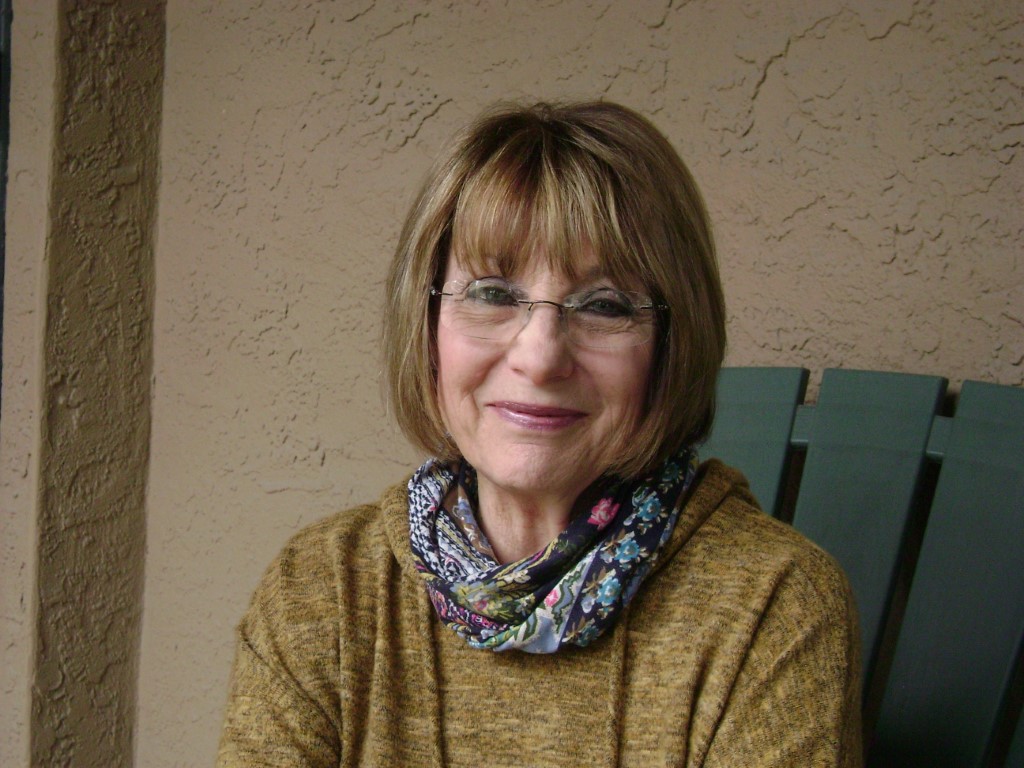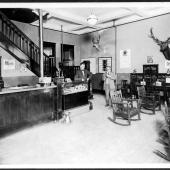Warrior Spirit: Celebrating Native American Veterans

A journey that began in 1994 will come to fruition with the unveiling of “The Warriors’ Circle of Honor” on the grounds of the National Museum of the American Indian (NMAI) in Washington, D.C., on Veterans Day, 2020. Congress mandated the memorial under the Native American Veterans’ Memorial Establishment Act. The act has proven to be a gateway to better understanding, appreciation, and recognition of the impressive service and sacrifice of Native Americans in the military. The Warrior Spirit Project is designed to complement the memorial by collecting Native veterans’ individual stories. These stories are beginning to emerge both nationally and here at home in Montana.
While some of Montana’s Indian veterans have been individually honored, the contributions of many others remain unrecognized. The Warrior Spirit Project Consortium, created in 2019, aims to change that. Project director Dr. Herman Viola—author, educator, and a curator emeritus at the Smithsonian Institution—maintains that in classrooms across the nation, there are “stark and critical deficiencies” in understanding Native American culture. Few realize that Native Americans—despite broken treaties, cultural suppression, and discrimination—have served this country in every conflict including the American Revolution. In fact, according to NMAI, more American Indians per capita have served in the military than any other ethnic group. There are currently more than 3,000 Native American veterans living in Montana.
When asked why they would serve a country that has historically treated them poorly, Indian veterans invariably answer that they are a warrior people and have a sacred obligation to defend their families and homeland. According to the Naval Historical Center, the warrior tradition is one key factor. Surviving the atrocities of war and the spiritual disharmony it causes leads to a more intimate understanding of life. Montana’s Indian veterans are exemplary, using their military experiences as cornerstones to complement their Native heritage and to build lifetimes of community service.


While Navajo code talkers became famous, several Montana tribes also sent code talkers into World War II. Code talkers were sworn to secrecy and so they never spoke about their work, even to their families. With declassification and passage of the Code Talkers Recognition Act of 2008, code talkers gained well-deserved credit. The act, passed on the heels of the 1994 memorial act, mandated the U.S. mint to strike gold medals for tribes and silver medals for individuals who served in this capacity. Forty-eight members of Montana’s Fort Peck Reservation served as code talkers in the Montana National Guard’s Company B, 163rd Infantry Regiment. These men used their native Sioux and Assiniboine languages to communicate messages that the enemy could not decode. Ironically, most code talkers attended government boarding schools where the use of native languages was forbidden.
Venerated Crow chief Joseph Medicine Crow, recipient of a Bronze Star and the Presidential Medal of Freedom, counted coups on the battlefield in France during World War II. Wearing an eagle feather in his helmet and two red stripes of war painted on his arms beneath his uniform, he recalled that it was this “strong Indian medicine” that brought him home safe. He became an acclaimed educator and advocate, traveling many times to Washington, D.C., to represent his people.
Barney Old Coyote, Jr., became the most decorated World War II Native American veteran. He grew up on the Crow Reservation, proud of his distinguished Crow ancestry. His grandfather fought with the US Army in the 1876 Battle of the Rosebud, precursor to the Battle of Little Big Horn. Barney enlisted in the Army at 17 with his parents’ permission, days after the bombing of Pearl Harbor. He and his brother, Henry, fought together as aerial gunners on B-17’s. Barney described the experience as traumatic, “… because you never know when that next burst is gonna hit, or if that next fighter airplane is gonna get you.”
Barney’s military honors include recognition as a code talker and flying ace. After service, he worked as a special assistant to the Secretary of the Interior under President Lyndon Johnson where he contributed to numerous projects benefitting Native Americans. In 1970, he initiated the Native American Studies Program at MSU, and later, with Henry, translated and published Way of the Warrior: Stories of the Crow People, one of few works about Native Americans edited and published by Native authors.
Not all soldiers were so lucky. Louis Charles “Chuck” Charlo was a direct descendant of the Salish chief Three Eagles who welcomed Lewis and Clark to the Bitterroot Valley 1805 and the venerated Salish chiefs Victor and Charlo. Chuck enlisted in the Marines with parental permission weeks after his 17th birthday in 1943. He revered his ancestors and believed that continuing his warrior heritage was the right thing to do. Trained in combat and assault, Chuck served with the 5th Marine Division, 28th Regiment, Company F.
Deployed aboard the USS Missoula to Japanese-held Iwo Jima in 1945, Chuck participated in the Americans’ eventual capture of the island in the war’s bloodiest battle. Dodging enemy fire, Chuck and three others were the first Americans to scale the treacherous slope of Mount Suribachi where the flag of the USS Missoula was planted at the summit. Scaling Suribachi a second time, Chuck provided cover for the iconic, second American flag raising that became World War II’s most famous photograph. Two weeks later as he attempted to carry a wounded comrade to safety, enemy snipers killed them both. They were among 6,800 American lives lost at Iwo Jima.

Louis “Louie” Adams, acclaimed Salish elder, was born on the Flathead Reservation near Missoula. He joined the Navy at 18 in 1951, seeking to further his education, and served during the Korean War aboard the USS Hubbard. After service, Louie returned to his home in Montana. In addition to a twenty-year career with the Bureau of Indian Affairs and Tribal Forestry, Louie was an iconic historian of the Salish people and their land. He was a revered ambassador of the Salish culture and a beloved teacher and storyteller. He shared his experiences with audiences of all ages, fostering understanding and goodwill among all cultures. He made a difference to many.
Contemporary Indian veterans continue to serve and honor their warrior culture. Jamie Fox, a Gros Ventre and Métis, grew up on the Fort Belknap Reservation. Both her grandfathers were World War II veterans and numerous uncles and aunts served during the Korean, Vietnam and Desert Storm eras. Like other Indian veterans, Jamie considers military service a high honor and the extension of warrior society. Enlisting in the Air Force at 17 in 2007 and twice deployed to the Middle East, she served until 2017. Jamie was one of few women trained in heavy aircraft maintenance keeping planes mission ready. As a crew chief, she held the lives of those who flew in those planes literally in her hands. During a visit home to Fort Belknap following her first deployment, Jamie’s community ceremoniously paid her tribute with an eagle feather, a high honor. Her mother was equally honored with a star quilt. Jamie explains that worry for a child in service makes a mother a warrior, too.
 Jamie’s musically talented family has preserved rich musical traditions steeped in Celtic, French, and Native American cultures. As a youngster, she learned to play the fiddle and with her family, widely shared their cultural songs and dances. When she enlisted, Jamie took her fiddle with her. After service, her cultural heritage helped her through the difficult transition to civilian life. Today, Jamie is a highly acclaimed Métis master fiddler who shares and teaches her craft. Her military service is part of who she is, and like her art, she celebrates it. “I wish that more veterans would share their stories,” she says, “and celebrate what will always be a big part of [their] life.”
Jamie’s musically talented family has preserved rich musical traditions steeped in Celtic, French, and Native American cultures. As a youngster, she learned to play the fiddle and with her family, widely shared their cultural songs and dances. When she enlisted, Jamie took her fiddle with her. After service, her cultural heritage helped her through the difficult transition to civilian life. Today, Jamie is a highly acclaimed Métis master fiddler who shares and teaches her craft. Her military service is part of who she is, and like her art, she celebrates it. “I wish that more veterans would share their stories,” she says, “and celebrate what will always be a big part of [their] life.”
The Warrior Spirit Project offers an opportunity for Indian veterans and their families to share their stories. The project is funded by the Library of Congress Teaching with Primary Sources in cooperation with the National Cemetery Administration’s Veterans Legacy Program and the National Indian Education Association. Montana partners include the Montana Historical Society, the Office of Public Instruction, and educators and historians who are collecting personal stories, oral interviews, and primary documents. These resources and attendant curricula will soon be available to teachers, students, and researchers on the Library of Congress Veterans History Project website.
For more information or to participate, click here.
 About the Author
About the Author
Ellen Baumler is an award-winning author, historian, and a member of the Warrior Spirit research team collecting experiences of Native American veterans. Her latest project, The Life of the Afterlife: A History of Montana’s Cemeteries, is forthcoming in 2021 from the University of Nebraska Press.












- Reply
Permalink